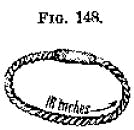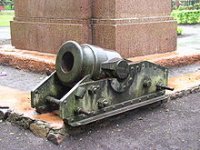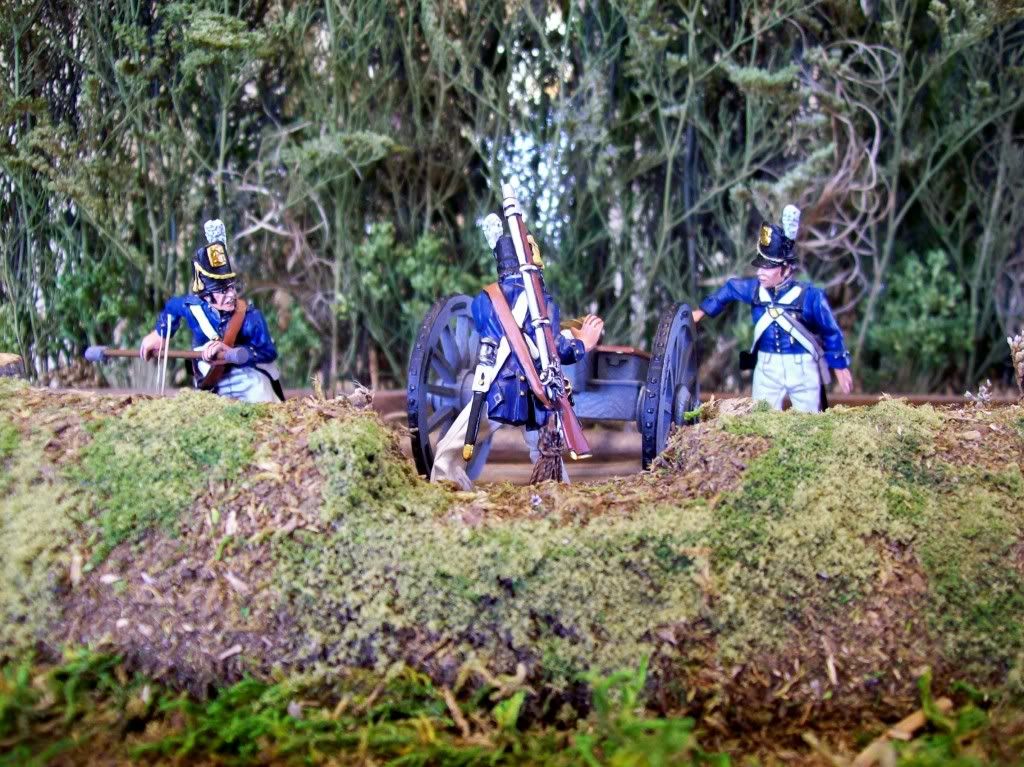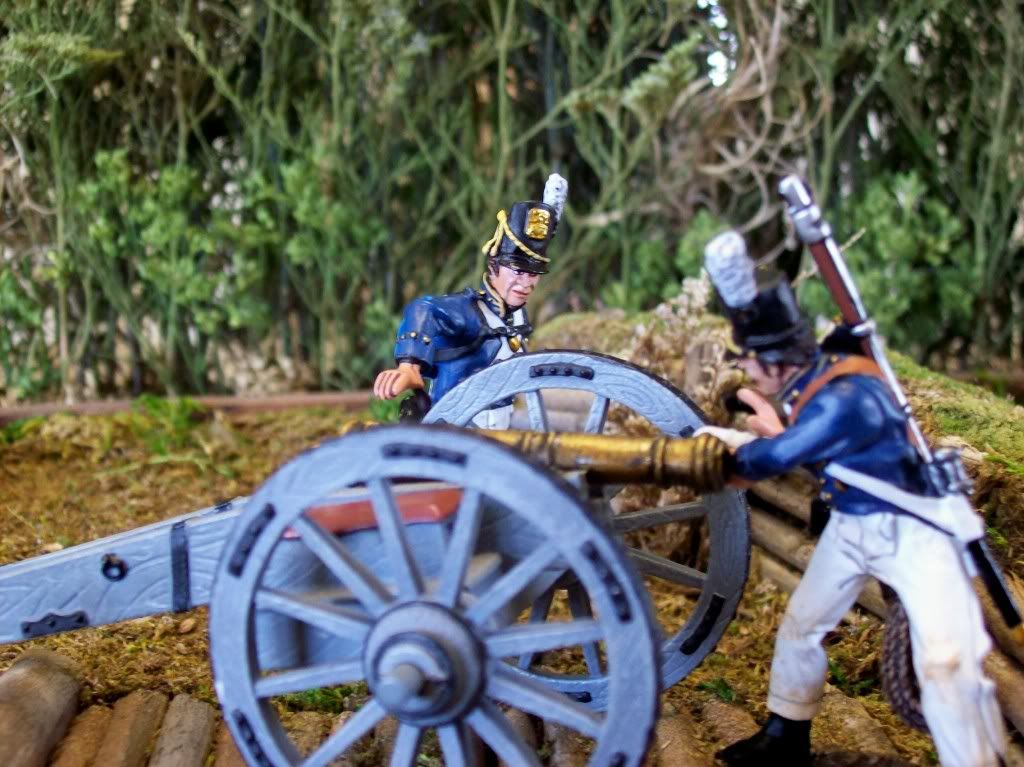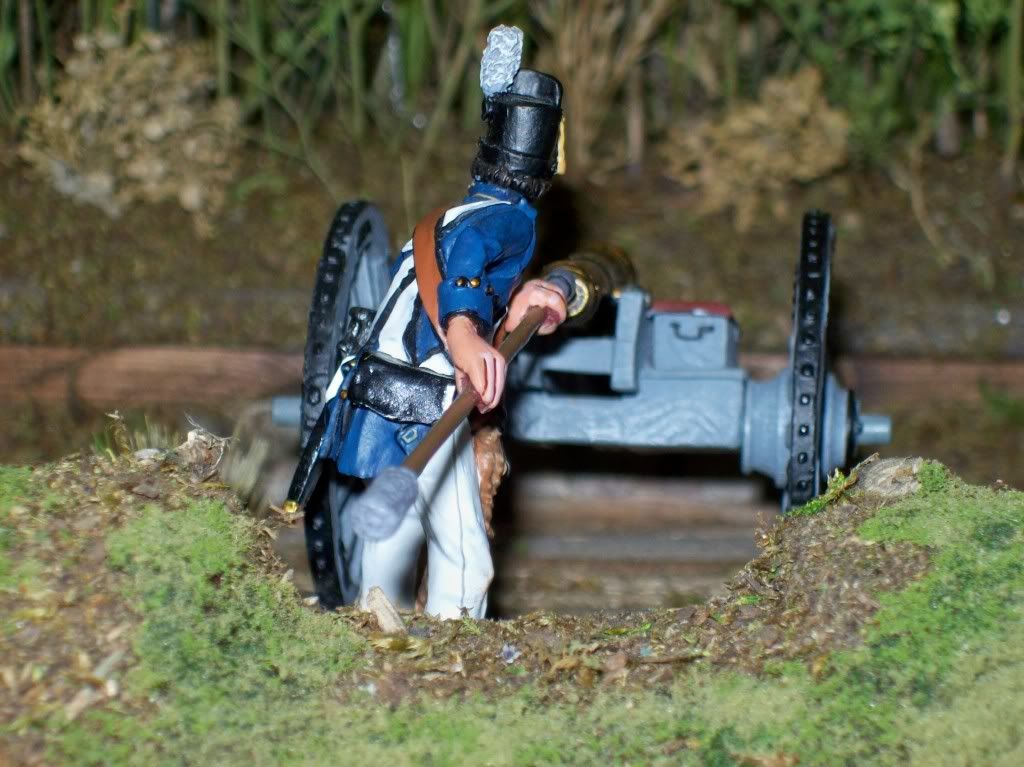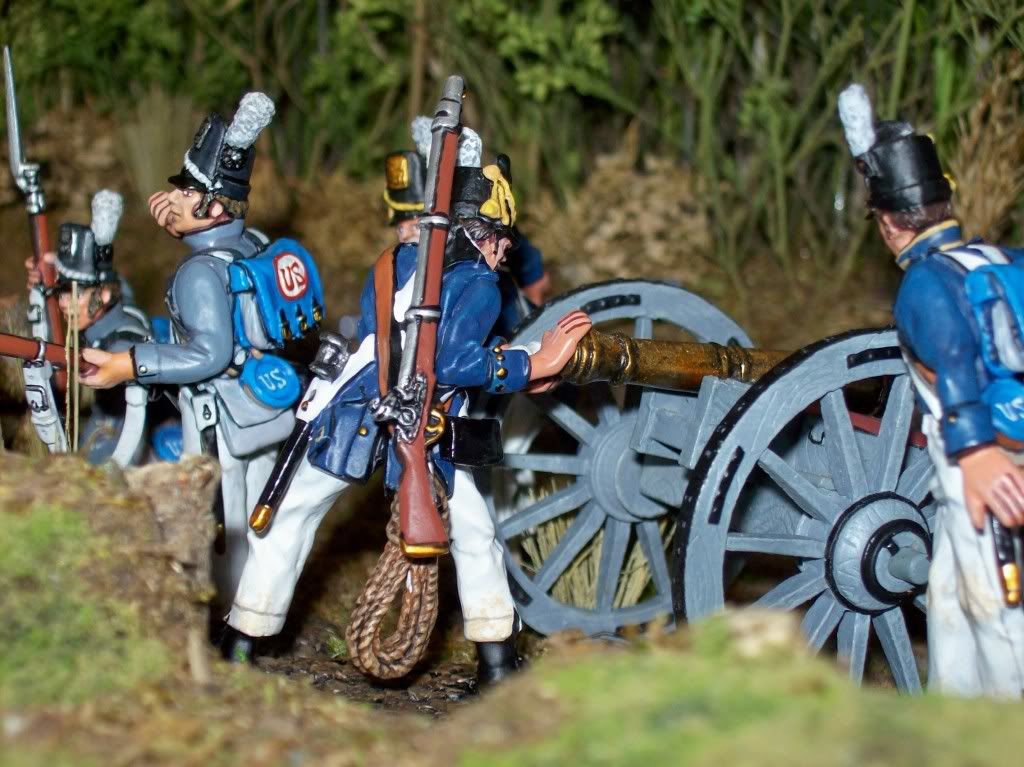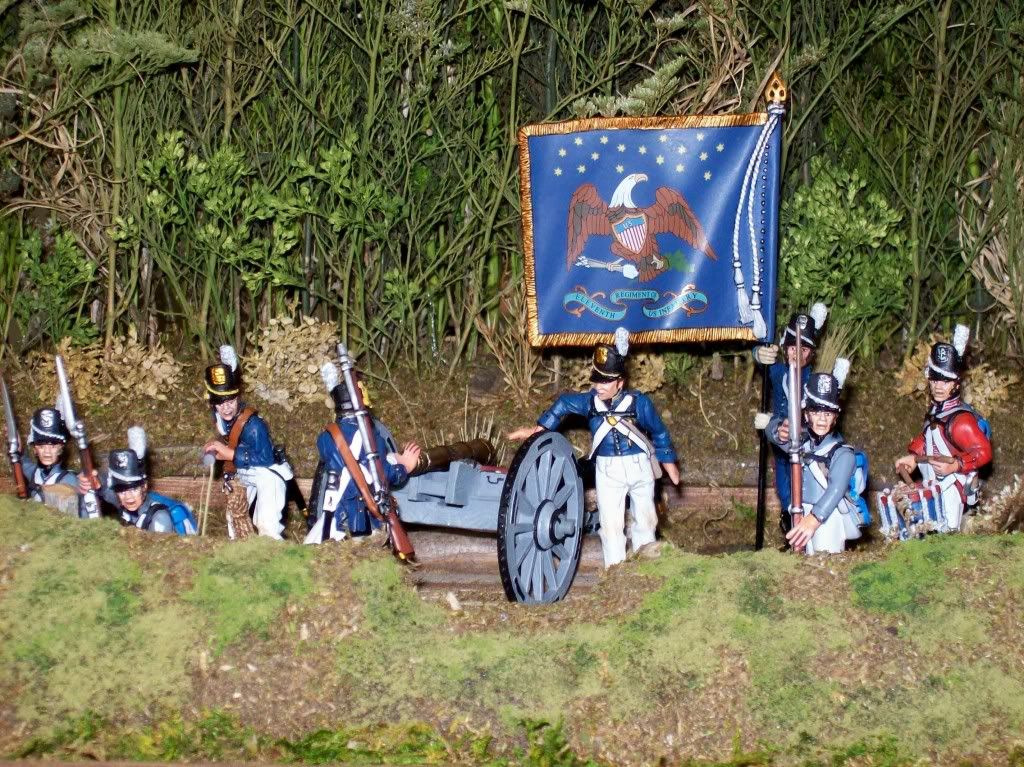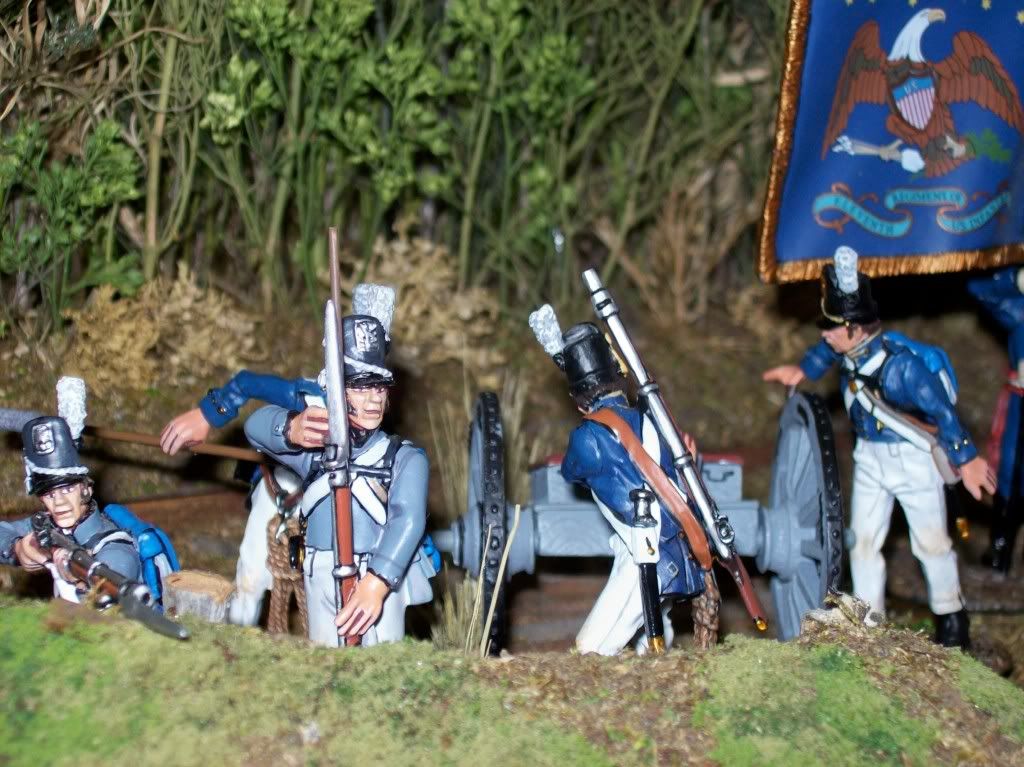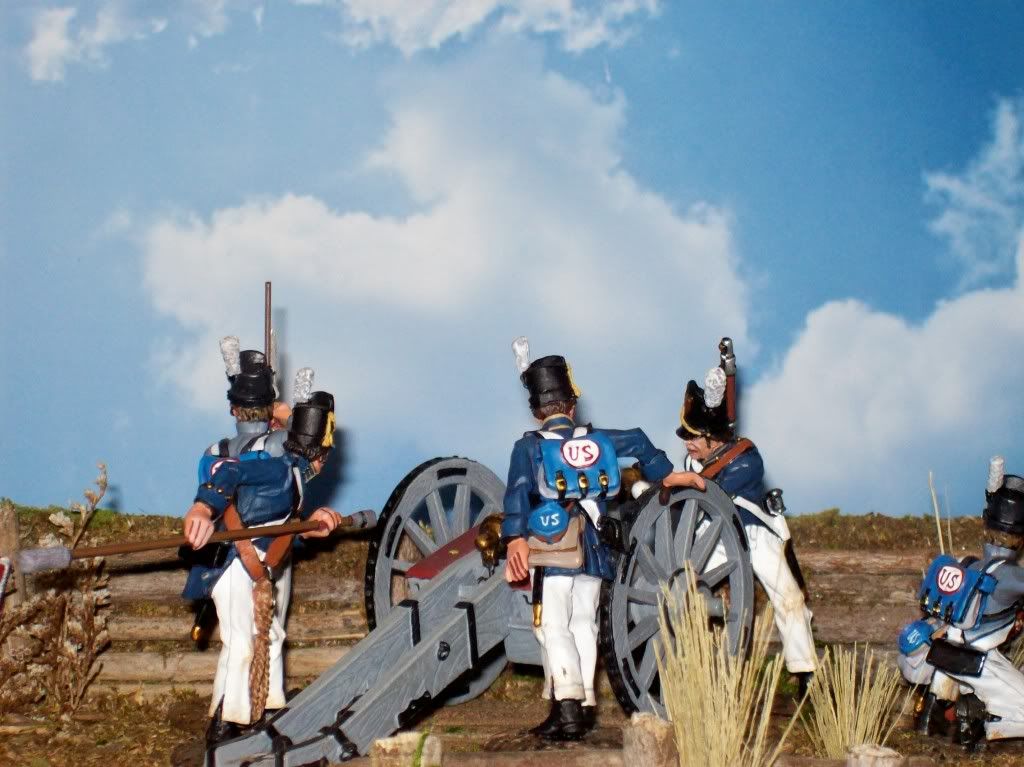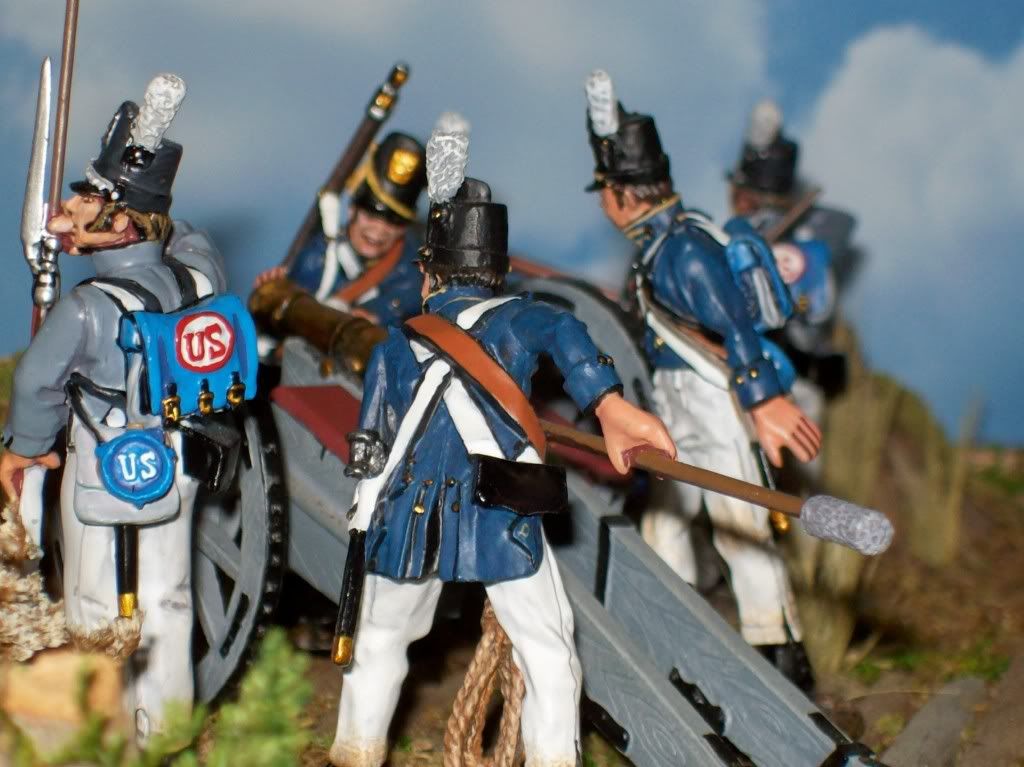Ken...brass is definitely both acceptable and correct in 1812 for the British side...
The artillery establishment of the British Army in North America was based on the standard establishment of the field army used in Spain during the Peninsular campaign. Normal British Army issue to the artillery was based on the
brass 6 pounder and
brass 9 pounders and 12 pounders, as well as the
brass 5.5Ó howitzer. The howitzer and 6 pounders used the same gun carriage, indicating a commonalty of interchangeable parts similar to the French system adapted by the American artillery.
http://war1812.tripod.com/bartillery.html
Prior to the reorganization of the American Artillery Corps in 1808, most of the guns used were either of contemporary French manufacture or were guns left over from the earlier War for Independence. the only standardization that existed was the adaptation of the French Graubeval system of standardized gun carriages. This was a double trail system that came in two sizes, one for guns of 6 pdr size and smaller, and one that mounted anything larger than a 6pdr.
In 1808, The United States Army decided to standardize the guns themselves. The result was three specific types - 6 pdr iron guns, 12 pdr iron guns, and 6 inch brass howitzers. The choice of sizes and materials used was both rational and simple. Copper and tin, both necessary to manufacture brass cannon barrels, were not in great supply - the great copper mines of the Northwest Territory (Minnesota and Wisconsin) had yet to be developed. Tin, as a natural resource, was also very scarce. The Army was quick to realize that cannons used by the United States would have to be made in the United States, or the Army would be dependent on European sources - many of them from potential adversaries, such as England - to fulfill their needs for sufficient artillery. This was an intolerable situation.
Secondly, the iron cannon foundries in Philadelphia had just developed manufacturing techniques that would result in stronger, lighter, iron cannon barrels than had been possible before, and manufactured in a fraction of the time that was needed previously. This technique basically consisted of casting the cannon in a multi-part mold, in which the bore would be cast rather than drilled later. Also, water-cooled piped ran through the bore portion of the mold, case-hardening the inner surface of the cannon, as well as the more standard case hardening of the outer surfaces. This resulted in an iron cannon barrel that was stronger than anything previously made, and, because of the strength value of the iron, could be made with thinner walls - resulting in a much lighter gun. This meant great mobility, as well as the ability to move the gun over surfaces that had previously been denied due to weight considerations. The choice of calibers was also simple. The lighter 6 pounders made good mobile guns that were usable on the battalion and brigade level, as well as being within the necessary parameters of the requirements of the horse artillery; the large 12 pounders had proved their worth on the fields of Europe, and were the mainstay of the French Army artillery establishment. Both guns were light enough to be used in mobile field operations, and the 12 pounder had the additional advantage of greatly outranging British guns on an equivalent issue level. Also, both guns were light enough in their throw weight that they were easy to reload quickly, thus capable of sustaining a high rate of fire.
This was fit in perfectly with the Artillery CorpsÕ developing doctrine of tactical and strategic use of guns during field operations. The acquisition of howitzers was another matter, entirely. The Artillery Corps had come to appreciate their usefulness in a fluid, tactical situation, but simply had not sufficient experience to modify the brass howitzers for manufacture in iron. On the other hand, it was envisioned that they only needed one howitzer per battery, so the acquisition requirements were much lower that for the guns. Noting that the French howitzers worked quite well (and would easily mount on the same carriage as the 6 pounder), it was decided to acquire these weapons through import.
http://war1812.tripod.com/artillery.html
Seems for the most part...other than the Howitzer...the US Army used iron cannons...but that is not to say that this is incorrect for the US Army for 1812...
A reasonable attempt was made to paint all gun carriages a uniform color, in the fashion of European armies, and a deep sky blue, very similar to that used by the Prussian army, was eventually chosen. In addition, all iron work was painted black to prevent rusting and flaking, and the hubs of all wheels were painted red. This color scheme, however, was by no means universal. Some brass guns, purchased from France, retained their French medium olive green carriage colors, and some guns that were attached to General Wade HamptonÕs army were painted red as the only available color at the time.
Guns captured from the English and pressed into service often retained their original gray carriage color for some time, even when on active service.





